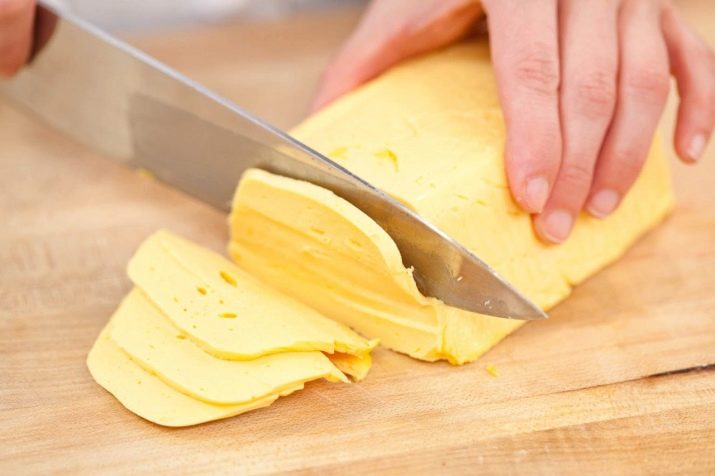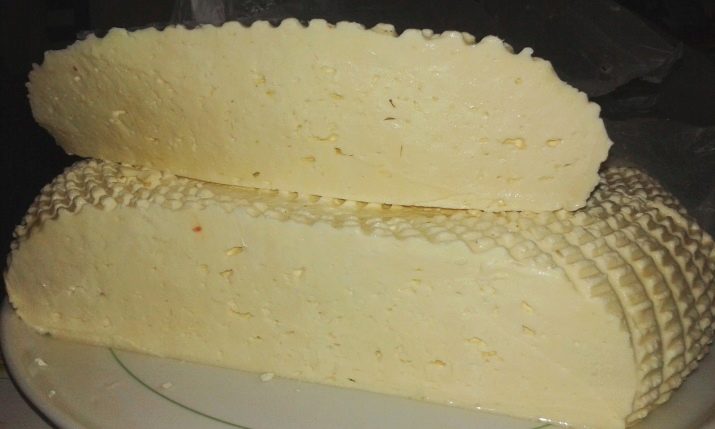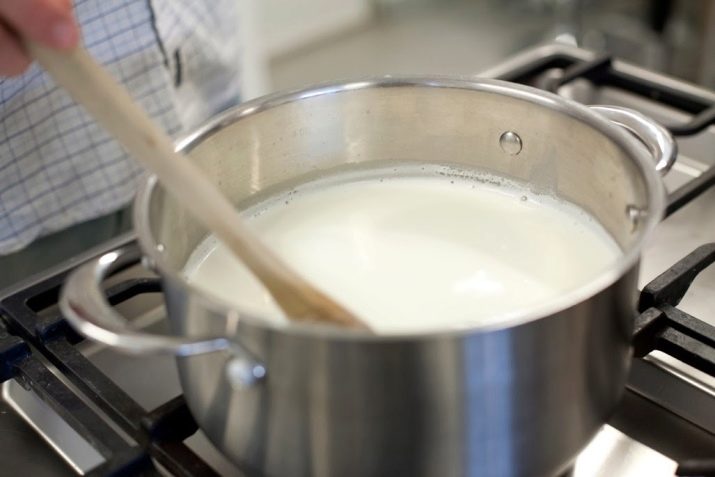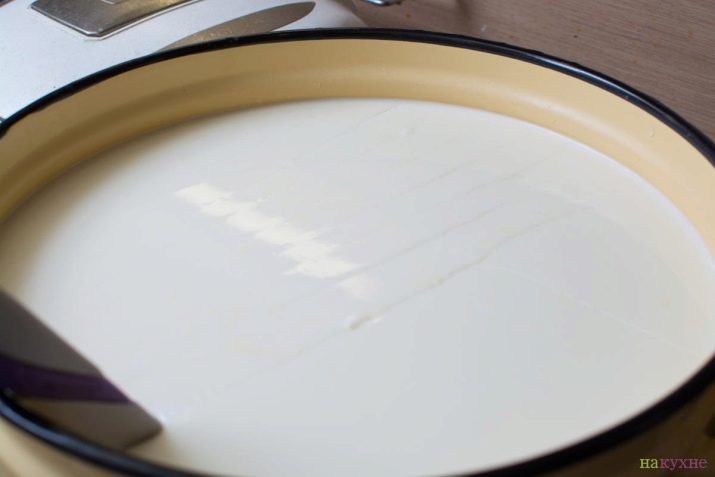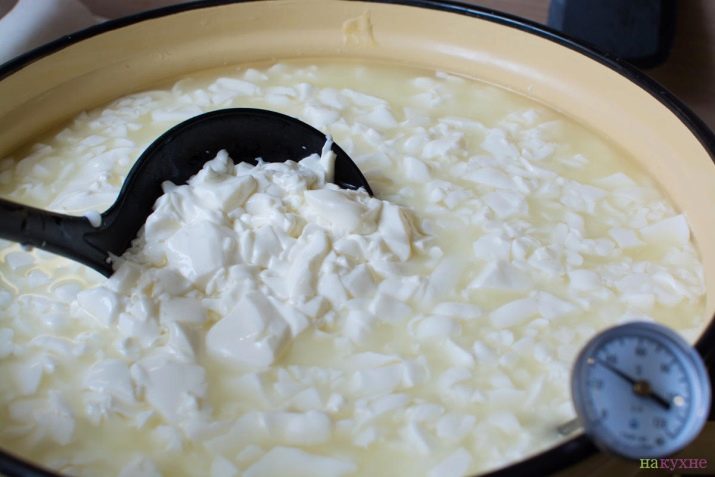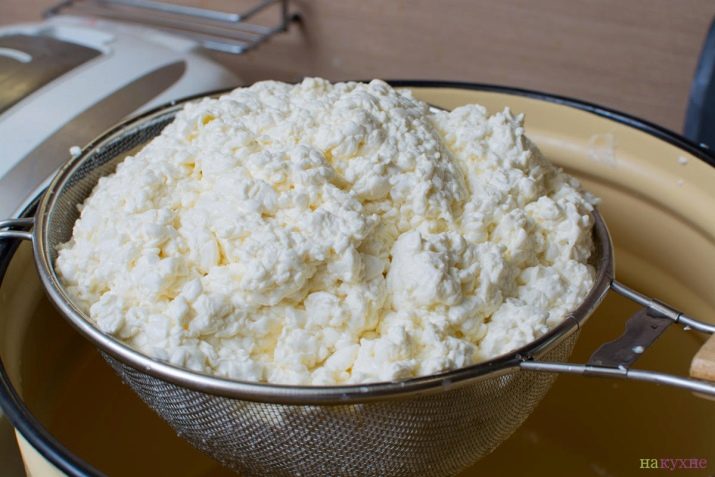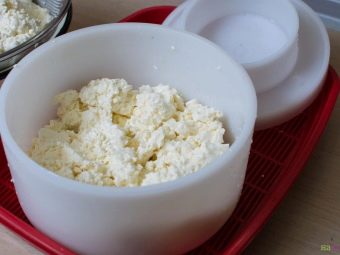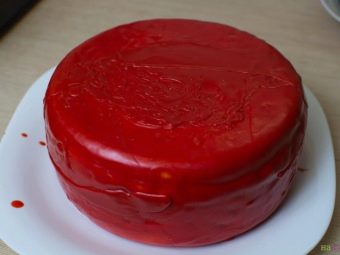How to cook Russian cheese at home?
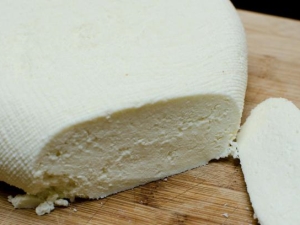
Russian cheese, made from the highest quality milk, has been pleasing gourmets for many years.It belongs to the hard cheeses, characterized by a high degree of lactic acid fermentation. However, often the goods on the shelves of stores, far from the accepted standards, and it is not always fresh. This problem can be solved by making this type of cheese at home. How to make it from milk at home will be discussed further.
Benefit
Russian cheese has a sour aftertaste. Its consistency is quite dense, and the shade is warm oil. This product is rich in proteins, fats, while the carbohydrate content in it is low. Due to its chemical composition, it contributes to the normalization of the work of many systems of the human body. For example, thanks to proteins, which are building materials, it not only brings them back to normal, but also contributes to their formation.
Its use favorably affects a hormonal background, a condition of muscles. In addition, Russian cheese is the prevention of viral infections. Due to phosphorus and calcium, it participates in the construction of bones, and is also indicated for people with joint diseases. Thanks to vitamin B12, it is effective in anemia, anemia and hepatitis. Among other useful qualities, it is necessary to note a positive effect on the state of the nervous system.
Possible harm
Like any other cheese, Russian is characterized by high fat content. Therefore, overweight people should limit its use. Those who have diseases such as gastritis, hypertension, and acidity disorders, cannot eat this cheese either. People at risk of pyelonephritis and urolithiasis are also at risk.
In addition, you can not use the product if it is stale: This can lead to disruption of the digestive system. It is important to take into account the fact that in the shop cheese there are special salt-melters, accelerating its maturation. With regular use, they are able to saturate the body with toxins, wash out calcium from it, as well as reduce its absorption. They provoke malfunctions in the digestive tract, the liver, the appearance of kidney stones and gall bladder.
Create a product at home
Cooking Russian cheese at home is actually not something difficult and time consuming. The only thing you will have to consider is that it will take a lot of milk to make such a product (one liter is not enough). However, it may be in the stage of souring. In addition, you need to understand that for cooking you need to use natural products.
An exemplary healthy cheese recipe consists of the following ingredients:
- cow milk - 10 liters;
- yeast - about 100-200 mg;
- boiled water - about 50 ml for the enzyme, 3 liters for cooking and 1 liter for brine;
- fine salt - at least 3 tablespoons;
- liquid rennet enzyme - about 0.5 tsp.
In addition, you need to prepare a kitchen thermometer, a pot with a capacity of at least 11 liters, a couple of cups, a knife and a special form for cheese of 1 kilogram.
It is important to take care of the presence of a special thermal package in which the hard cheese will ripen.
Training
Since you need to make natural milk, you can not do without its pasteurization and ripening. If the product is purchased on the market, it will be pasteurized at a temperature of at least +70 degrees C. For accuracy, you can use a kitchen thermometer. After heat treatment, the milk is cooled and kept for about two days at a temperature of + 10 ... 12 degrees. This is how milk reservation is performed. If it is necessary to accelerate ripening, the milk is subjected to rapid cooling.
Fermentation and base
To prepare the starter, take a glass of warm milk with an approximate temperature of +35 degrees. The leaven is dissolved in it by thorough mixing, then the mass is covered with a lid and left for about 40 minutes in a warm place. The minimum time of infusion is half an hour.The main (without ferment) mass of milk is poured into a large saucepan and put on the stove, heating it to a temperature of +35 degrees C.
Then, prepared milk ferment is poured into the container. While the milk is standing, take a second glass (cup) and mix the liquid rennet enzyme with water in it. After the liquid becomes homogeneous, it is poured into leaven milk and mixed again to a state of uniformity. Then for 40 minutes keep the temperature of the mixture at +30 degrees.
You do not need to constantly mix milk fluid - you need to let it stand.
Thick base
After forty minutes, instead of milk, a characteristic curd clot appears in the pan. It will be easily separated from the walls of the container, having a jelly-like consistency. Using a long knife, this thick base is cut along and across with a step of 1.5-2 cm, forming small cottage cheese cubes. After that, the pot is again covered with a lid and left for another 10 minutes.
Digestion and pressing
When time is up, the cubes will sit on the bottom of the tank. It is necessary to drain the liquid, and then put the container with the future cheese on a slow fire. Heat the mass can only be up to +37 degrees, it will take no more than 10 minutes. At this stage, the dimensions of the cheese cubes will decrease. Then it is necessary to drain the remaining whey and pour the formed cheese grain with boiled water, the temperature of which should not exceed +40 degrees.
The pot is put on the stove again and processed at a temperature not exceeding +42 degrees C for 15 minutes. After the time the liquid is drained, the mass is reclined in a colander and salted, and then thoroughly mixed and left to remove the remaining liquid. It usually takes about half an hour. Then the mass is placed under the press for 20 minutes with an optimum weight of 2-3 kg. After half an hour, the cheese is turned over under pressure.
Brine and ripening
In a liter of hot water dissolve 3 tablespoons of salt, bring to a boil and filter through thick gauze. Cheese is put in the liquid and left for 12 hours for salting, closed with a lid and periodically turned over. Next, the cheese is removed from the brine, allow to drain excess liquid and dried. Then, as a rule, it is placed in the bottom of the refrigerator on the grid for further maturation.
It usually takes from two to three days. In order for the process of making the product to take place at home correctly, during the entire ripening time the cheese must be turned over so that its crust becomes dry. It is possible to put a product in a thermopacket for ripening, tightly pulling it together and tying it.
Further maturation technology provides for storing the product on the bottom shelf of the refrigerator for three weeks. With this method, you need to turn the cheese in the package no more than once a day. It should be stored at a temperature from 0 to +8 degrees C. The color of the product should be creamy beige, its taste will have a characteristic sourness.
The fat content of homemade cheese with this recipe will be no more than 50%, it will be quite dense and tasty. Every owner can make it if she takes into account all the nuances of the technology. The taste of such a product in many ways surpasses any shop analog. In addition, it is really good for health, which is not the case for shop cheeses due to additives that accelerate the ripening and deprive the technology of many natural stages of production.
To make the film fit the cheese as tightly as possible, it is dipped into the hot water for a few seconds along with the cheese.
To learn how to make Russian goat cheese, see the next video.

